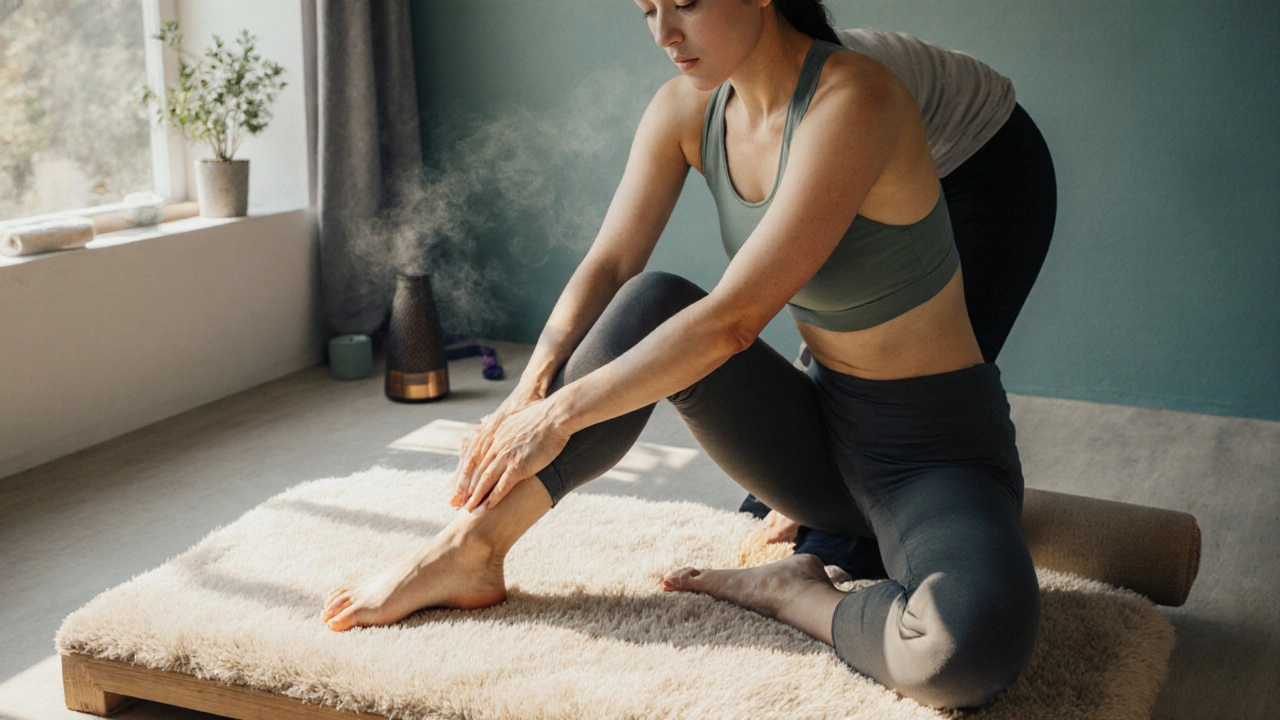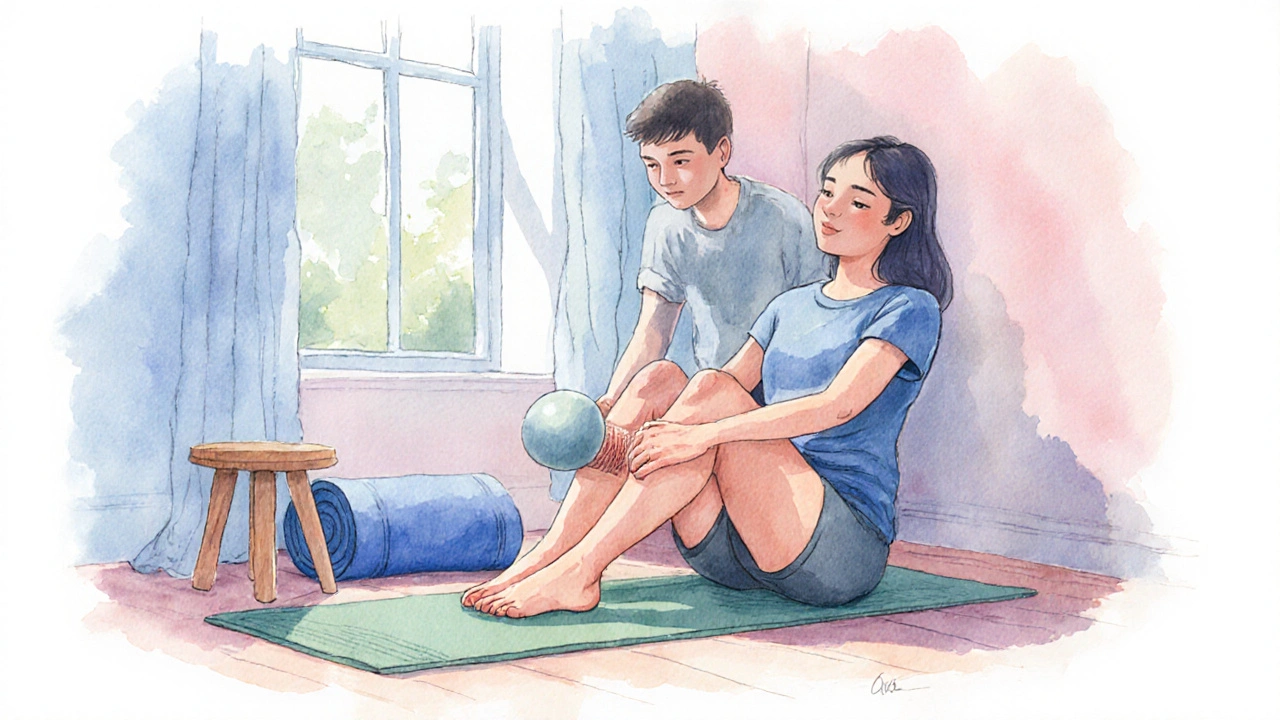
When you hear Thai massage, you might picture soothing oils and gentle strokes, but it’s also a powerful way to improve flexibility. This ancient practice blends stretching, pressure, and rhythmic movements to lengthen muscles and release tension, making it a natural alternative to conventional stretch routines. In the next few minutes, you’ll learn where Thai massage comes from, why it works, what to expect in a session, and how to weave it into your own wellness plan.
Thai massage is a traditional healing art that dates back over 2,500 years, rooted in Indian Ayurvedic principles and ancient Buddhist monk practices. Originally called "Nuad Bo-Rarn", it was used in temples to treat warriors and monks alike, combining yoga‑like stretches with rhythmic pressure.
The technique relies on five main elements: passive stretching, rhythmic rocking, deep tissue pressure along energy lines (called "sen" in Thai tradition), assisted joint mobilization, and mindful breathing. Practitioners use their hands, forearms, elbows, knees, and feet to move the client into yoga‑style poses, all while applying targeted pressure.
Unlike Swedish massage, which focuses on gliding strokes, Thai massage is more active - you’re a partner in the stretch. Compared with static yoga, a Thai session is guided, allowing you to reach deeper ranges without the mental effort of balancing poses.
| Practice | Key Feature | Primary Benefit |
|---|---|---|
| Thai Massage | Assisted stretching + pressure | Enhanced flexibility & circulation |
| Swedish Massage | Long, gliding strokes | Relaxation & muscle tension relief |
| Yoga | Self‑directed poses | Strength, balance, flexibility |
Anyone looking to increase range of motion can profit - athletes, desk workers, seniors, and even beginners who feel stiff after a long day. Because the therapist guides the movement, it’s safe for most people, though those with certain injuries should consult a professional first.
When a therapist slowly pulls a muscle beyond its usual limit, the fibers stretch gently, encouraging them to adapt. Over repeated sessions, this can add a few centimeters to your reach in hamstrings or the lower back.
The connective tissue surrounding muscles, called fascia, can become sticky with inactivity. Thai massage’s rhythmic compressions help glide fascial layers, reducing adhesions and allowing smoother motion.
Pressure along the sen lines stimulates capillary flow, delivering oxygen and nutrients to tight areas. Better circulation speeds up recovery after workouts and reduces soreness.
| Benefit | Description | Impact on Flexibility |
|---|---|---|
| Muscle Lengthening | Gentle, assisted stretches | Increases range of motion |
| Fascia Release | Rhythmic pressure on connective tissue | Reduces restrictions |
| Circulation Boost | Enhanced blood flow | Speeds recovery, reduces stiffness |
Because the session incorporates breathing cues, clients often report feeling calmer and more aware of their body’s limits, which translates to safer stretching outside the clinic.
Regular Thai massage can make everyday tasks-like reaching for a high shelf or tying shoelaces-feel easier, and it can lower the risk of strains during sports or exercise.
Sessions usually take place in a quiet room with a mat on the floor. Clothing is lightweight and flexible-think yoga pants or a loose shirt-so the therapist can manipulate your limbs without stripping.
Therapists can adjust intensity, focus on specific areas (e.g., hips for runners), or blend in aromatherapy if you enjoy scents. Let them know if you prefer a lighter touch.
Speak up about any discomfort. A good therapist will ask, “Is this pressure okay?” before moving deeper. Arriving hydrated and with a light snack can help you stay relaxed.

Create a calm space: lay down a firm mat, dim the lights, and play soft music. Have a pillow or bolster nearby for support during seated stretches.
Invest in a good-quality yoga mat, a small massage ball, and perhaps a Thai massage instructional video from a certified teacher. If you’re unsure about technique, book a single session with a licensed therapist to learn proper form.
Repeat 2-3 times a week for gradual improvement.
If you’re doing this with a partner, communicate clearly about pressure. Start with gentle pulls before moving to deeper stretches. For couples, a short 20‑minute session after work can be a bonding ritual.
Light, stretchy clothing works best-think yoga pants, a fitted T‑shirt, or a comfortable tank top. You’ll stay clothed throughout; the therapist manipulates you on a mat, so no need for a robe or underwear changes.
In a regular stretch, you move on your own, often limited by fear of pain. In Thai massage, a therapist gently guides you past that barrier, applying pressure to release tension while you stay relaxed. This assisted approach allows deeper, safer lengthening.
It depends on the injury. A qualified therapist can modify techniques-using lighter pressure and avoiding painful ranges. Always disclose your condition during the initial consultation and, if unsure, ask your doctor whether assisted stretching is safe for you.
For noticeable improvements, aim for a session every 1‑2 weeks combined with a simple home routine. Your body will adapt, and you can gradually extend the interval as flexibility increases.
Yes-when the therapist tailors the intensity and avoids extreme bends. Gentle assisted stretches can help older adults maintain joint mobility and reduce stiffness, but a health check first is wise.
Look for therapists certified by recognized bodies such as the Thai Traditional Massage Association or a reputable spa school. Verify their training hours and read client reviews for consistency.
Hygiene is key: therapists should wash hands, use clean linens, and sanitize equipment. Consent is essential-any pressure that feels uncomfortable should be stopped immediately.
| Practice | Purpose | Example |
|---|---|---|
| Verify credentials | Ensure skill level | Check certification badge |
| Maintain hygiene | Prevent infections | Use fresh linens each session |
| Communicate limits | Avoid injury | Speak up if pressure is too strong |
Before the session, tell the therapist about any areas you’d like avoided-like a recent knee surgery. Clear boundaries keep the experience comfortable and effective.
People with acute fractures, severe osteoporosis, uncontrolled hypertension, or certain skin infections should avoid Thai massage until cleared by a medical professional.

Pair the massage with light yoga, mindfulness breathing, or a short walk after the session to lock in the flexibility gains.
If you enjoy a partner’s touch, a couples’ massage can be a fun way to stay motivated. Solo practice, using a massage ball or strap, lets you reinforce the stretches daily.
Bolsters, rolled towels, and flexible straps help sustain positions without straining. A small foam roller can mimic the therapist’s pressure on tight spots.
Consistency is the secret sauce. Even a 30‑minute session every two weeks, plus a 10‑minute home routine, can gradually widen your range of motion and keep muscles supple.
Search local directories for “Thai massage therapist London” and filter by certifications. Platforms like the Association of Thai Massage Practitioners list vetted members.
Websites such as YogaJournal.com and wellness forums host video tutorials and discussion threads where experienced practitioners share tips.
In the UK, massage therapists must adhere to health and safety regulations, and many clinics display their insurance certificates. Respect the cultural roots by acknowledging that Thai massage is a traditional healing practice, not merely a spa trend.
Books like “The Art of Thai Massage” by Asoke Khamthong and online courses from accredited schools can deepen your understanding of technique and theory.
Thai massage gives you a guided, low‑impact way to stretch deeper than you could on your own, while also improving circulation and mental calm.
Book a session with a qualified therapist, communicate your goals, and pair the experience with a simple home stretch routine. Notice how everyday movements feel smoother over time.
Have you tried Thai massage for flexibility? Drop a comment below, or follow the blog for more wellness tips. Your story might inspire someone else to give it a go!
Disclaimer: Some links may be affiliate links, but all recommendations are based on research and quality.